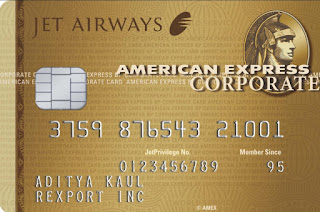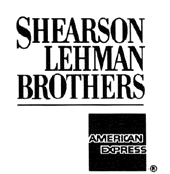American Express
The American Express Company, also known as Amex, is an American multinational financial services corporation headquartered in Three World Financial Center in New York City. The company was founded in 1850 and is one of the 30 components of the Dow Jones Industrial Average. The company is best known for its charge card, credit card, and traveler's cheque businesses.
In 2016, credit cards using the American Express network accounted for 22.9% of the total dollar volume of credit card transactions in the US.[5] As of December 31, 2017, the company had 112.8 million cards in force, including 50 million cards in force in the United States, each with an average annual spending of $18,519.
In 2016, Interbrand ranked American Express as the 25th most valuable brand in the world, estimating the brand to be worth US$18.358 billion. In 2017, Fortune ranked American Express as the 17th most admired company worldwide.
The company's logo, adopted in 1958, is a gladiator or centurion whose image appears on the company's traveler's cheques, charge cards and credit cards."american express"
American Express has been known for premium and expensive credit cards. However, the company has dropped its entry-level card eligibility criterion of Rs 600,000 annual income to Rs 450,000.
“We are witnessing higher engagement with the young and digitally-savvy demographic; 50-60 per cent of our new card members are below the age of 32 years,” says Manoj Adlakha, chief executive of American Express Banking Company in India.
Not only that — it is offering the card at an annual fee of only Rs 1,000 in the first year, and with a welcome gift worth the same amount. Effectively, a no-fee card.
Based on the spending that card members do and the benefits they would get in terms of membership reward points or bonus, the return they could get on the total spend threshold will be two to three per cent, says Adlakha.
However, for the rich and famous, there are offers at the other end. It is the only company offering a ‘platinum charge’ card, with a fee of Rs 50,000 annually and with no pre-set spending limit.
We are witnessing higher engagement with the young and digitally-savvy demographic; 50-60% of our new card members are below the age of 32 years” Manoj Adlakha Chief executive of American Express Banking."american express"
A problem is faces is of consumers complaining of limited merchant coverage. Adlakha says they are rectifying this. “Nearly 180,000 more merchant locations started accepting American Express cards in 2017. We embarked on partnerships with ICICI and State Bank of India for new merchant acquisition. We have nearly 20 per cent market share of point-of-sale (PoS) terminals and the good news is that these cover 80-85 per cent of the spending needs of our card members,” he says. Adding that PoS terminals powered by the company are growing at a little over 40 per cent annually.
The company says it is not worried about mobile payment companies possibly eating into their business. Adlakha says nine to 10 per cent of transactions are through digital payments (cards and mobile wallets) and the rest is still cash. “So, there is enough headroom for everyone to operate. Digital wallets and payment banks are relevant for specific used cases but I don’t see them as competitors in the bigger part of the business.”
However, he adds, businesess in the past few years have dramatically shifted to digital. He notes that 90 per cent of their card members log-in to their accounts digitally. “Online transactions contribute 57 per cent to our total number of transactions and 46 per cent to total value.”
American Express has also been quick to get on to the government’s QR code platform for digital payments, despite not catering to the mass market. Adlakha the QR code has nothing to do with income brackets but is for enabling merchants who feel they cannot afford a PoS or EDC (electronic data capture).
Adlakha is cautious when asked about the recent guidelines of the Reserve Bank of India (RBI) that all their data has to be stored within India in the next six months. “American Express is committed to following all applicable regulations and accords utmost importance to data privacy and security. Our data security procedures are robust and use sophisticated technology protection. At this stage, the RBI directive on local data storage is at a broad level and we are working with industry participants to understand the details. So, it would be premature to respond with specific action plans.”
American Express buildings
In 1854, the American Express Co. purchased a lot on Vesey Street in New York City as the site for its stables. The company's first New York headquarters was an 1858 marble Italianate palazzo at 55–61 Hudson Street, which had a busy freight depot on the ground story with a spur line from the Hudson River Railroad. A stable was constructed in 1867, five blocks north at 4–8 Hubert Street.
The company prospered sufficiently that headquarters were moved in 1874 from the wholesale shipping district to the budding Financial District, and into rented offices in two five-story brownstone commercial buildings at 63 and 65 Broadway that were owned by the Harmony family.
In 1880, American Express built a new warehouse behind the Broadway Building at 46 Trinity Place. The designer is unknown, but it has a façade of brick arches that are reminiscent of pre-skyscraper New York. American Express has long been out of this building, but it still bears a terracotta seal with the American Express Eagle.In 1890–91 the company constructed a new ten-story building by Edward H. Kendallon the site of its former headquarters on Hudson Street.
By 1903, the company had assets of some $28 million, second only to the National City Bank of New York among financial institutions in the city. To reflect this, the company purchased the Broadway buildings and site
At the end of the Wells-Fargo reign in 1914, an aggressive new president, George Chadbourne Taylor (1868–1923), who had worked his way up through the company over the previous thirty years, decided to build a new headquarters. The old buildings, dubbed by the New York Times as "among the ancient landmarks" of lower Broadway, were inadequate for such a rapidly expanding concern.
After some delays due to the war in Europe, the 21-story neo-classical American Express Co. Building was constructed in 1916–17 to the design of James L. Aspinwall, of the firm of Renwick, Aspinwall & Tucker, the successor to the architectural practice of the eminent James Renwick, Jr.. The building consolidated the two lots of the former buildings with a single address: 65 Broadway. This building was part of the "Express Row" section of lower Broadway at the time. The building completed the continuous masonry wall of its block-front and assisted in transforming Broadway into the "canyon" of neo-classical masonry office towers familiar to this day
American Express sold this building in 1975, but retained travel services there. The building was also the headquarters over the years of other prominent firms, including investment bankers J.& W. Seligman & Co. (1940–74), the American Bureau of Shipping, a maritime concern (1977–86), and currently J.J. Kenny, and Standard & Poor's, who has renamed the building for itself.
Financial services
In 1857, American Express started its expansion in the area of financial services by launching a money order business[ to compete with the United States Post Office's money orders.
Sometime between 1888 and 1890, J. C. Fargo took a trip to Europe and returned frustrated and infuriated. Despite the fact that he was president of American Express and that he carried with him traditional letters of credit, he found it difficult to obtain cash anywhere except in major cities. Fargo went to Marcellus Flemming Berry and asked him to create a better solution than the letter of credit. Berry introduced the American Express Traveler's Cheque which was launched in 1891 in denominations of $10, $20, $50, and $100.
Traveler's cheques established American Express as a truly international company. In 1914, at the onset of World War I, American Express in Europe was among the few companies to honor the letters of credit (issued by various banks) held by Americans in Europe, because other financial institutions refused to assist these stranded travelers.
The British government appointed American Express its official agent at the beginning of World War I. They were to deliver letters, money and relief parcels to British prisoners of war. Their employees went into camps to cash drafts for both British and French prisoners and arranged for them to receive money from home.
By the end of the war they were delivering 150 tonnes of parcels per day to prisoners in six countries.
Loss of railroad express business
American Express became one of the monopolies that President Theodore Roosevelt had the Interstate Commerce Commission (ICC) investigate during his administration. The interest of the ICC was drawn to its strict control of the railroad express business. However, the solution did not come immediately to hand.The solution to this problem came as a coincidence to other problems during World War I.
During the winter of 1917, the United States suffered a severe coal shortage and on December 26 President Woodrow Wilson commandeered the railroads on behalf of the United States government to move federal troops, their supplies, and coal. Treasury Secretary William Gibbs McAdoo was assigned the task of consolidating the railway lines for the war effort. All contracts between express companies and railroads were nullified and McAdoo proposed that all existing express companies be consolidated into a single company to serve the country's needs. This ended American Express's express business, and removed them from the ICC’s interest. The result was that a new company called the American Railway Express Agency formed in July 1918. The new entity took custody of all the pooled equipment and property of existing express companies (the largest share of which, 40%, came from American Express, who had owned the rights to the express business over 71,280 miles (114,710 km) of railroad lines, and had 10,000 offices, with over 30,000 employees).
Investment banking
During the 1980s, American Express embarked on an effort to become a financial services supercompany and made a number of acquisitions to create an investment banking arm. In mid-1981 it purchased Sanford I. Weill's Shearson Loeb Rhoades, the second largest securities firm in the United States to form Shearson/American Express.
After the purchase of Shearson, Weill was given the position of president of American Express in 1983. Weill grew increasingly unhappy with responsibilities within American Express and his conflicts with American Express' CEO James D. Robinson III. Weill soon realized that he was not positioned to be named CEO and left in August 1985. In 1984, American Express acquired the investment banking and trading firm Lehman Brothers Kuhn Loeb, and added it to the Shearson family, creating Shearson Lehman/American Express. It was Lehman's CEO and former trader Lewis Glucksman who would next lead Shearson Lehman/American Express.
In 1984, Shearson/American Express purchased the 90-year-old Investors Diversified Services, bringing with it a fleet of financial advisors and investment products. In 1988, Shearson Lehman acquired the brokerage firm E.F. Hutton & Co.. E.F. Hutton was merged with the investment banking business and the investment banking arm was renamed Shearson Lehman Hutton, Inc.
However, when Harvey Golub became CEO of American Express in 1993, American Express decided to get out of the investment banking business and negotiated the sale of Shearson's retail brokerage and asset management business to Primerica. The Shearson business was merged with Primerica's Smith Barney to create Smith Barney Shearson. Ultimately, the Shearson name was dropped in 1994.
In 1994, American Express spun off of the remaining investment banking and institutional businesses as Lehman Brothers Holdings Inc. After almost fifteen years of independence, Lehman Brothers filed for bankruptcy protection in 2008 as part of the late–2000s financial crisis."american express"








No comments:
Post a Comment